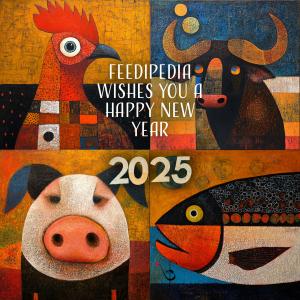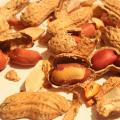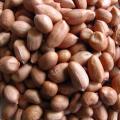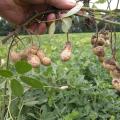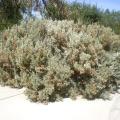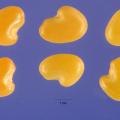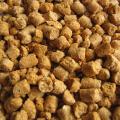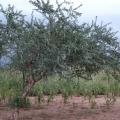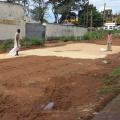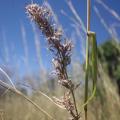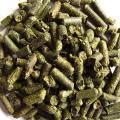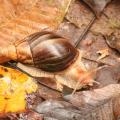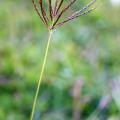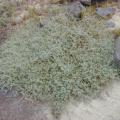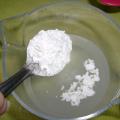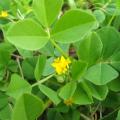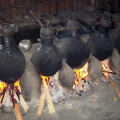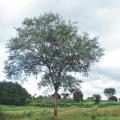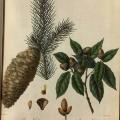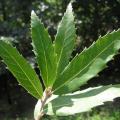Explore Feedipedia
|
The fruit (pod, nut) of the peanut (Arachis hypogaea L.) is made of an external... Read more |
The fruit (pod, nut) of the peanut (Arachis hypogaea L.) is made of an external... Read more |
The peanut plant (Arachis hypogaea L.) is grown mainly for its seeds, which are... Read more |
|
Old man saltbush (Atriplex nummularia Lindl.) is a halophyte species and one of... Read more |
Slenderleaf (Crotalaria brevidens Benth.) is a tropical legume mostly cultivated... Read more |
Wheat distillers grain is the main by-product from the distillation of alcohol from wheat... Read more |
|
The gum arabic tree (Acacia senegal (L.) Willd. or Senegalia senegal (L... Read more |
Enset (Ensete ventricosum (Welw.) Cheesman) is a tall herbaceous plant from... Read more |
Maize bran is a by-product of various maize processing industries, including starch and... Read more |
|
Kachi grass (Cymbopogon caesius (Nees ex Hook. & Arn.) Stapf) is a perennial... Read more |
Alfalfa (Medicago sativa L.) is a perennial herbaceous legume. Due to its high... Read more |
Snails are plentiful in some regions. They can also be introduced and raised on... Read more |
|
Creeping bluegrass (Bothriochloa insculpta (Hochst. ex A. Rich.) A. Camus) is a... Read more |
Creeping saltbush (Atriplex semibaccata R. Br.) is a shrub from dry and saline... Read more |
Sulla (Hedysarum coronarium L. and other Hedysarum species), is a... Read more |
|
Starch is a carbohydrate (polysaccharide) consisting of a large number of glucose units.... Read more |
Bur clover (Medicago polymorpha L.) is a Mediterranean winter and annual clover... Read more |
Atella is an Ethiopian by-product, resulting from the production of tella (beer) or... Read more |
|
Albizia amara (Roxb.) B. Boivin is a tropical tree from the dry areas of East... Read more |
The moru oak (Quercus floribunda Lindl. ex A. Camus) is a large evergreen tree... Read more |
The banj oak (Quercus leucotrichophora A. Camus) is an evergreen oak tree of... Read more |
Pages
Recent resources
 Opinion paper: Phasing out of the aid provided to the livestock sector during expectedly recurrent emergencies
- Makkar, 2024. animal
Opinion paper: Phasing out of the aid provided to the livestock sector during expectedly recurrent emergencies
- Makkar, 2024. animal
Open access opinion paper that makes a case that the emergency aid do more harm than good to African countries. It is valid for all the fields of agriculture but has direct consequence for animal agriculture. The context here is the aid provided during emergencies that are foreseeable recurrent.
The role of livestock in food security, poverty reduction and wealth creation in West Africa
- Molina-Flores et al., 2020. Food and Agriculture Organization of the United Nations Accra, 2020
Livestock is key to 377 million people in West Africa and in some countries, up to 60% of the population is involved in livestock production. The demand for animal products is increasing with population growth, urbanization, growing middle class, and due to shifting consumer preferences towards animal products. To meet this growing demand, countries in West Africa must engage in accelerated sustainable livestock production undertaking. Livestock development is key to eradicate hunger and poverty. This book attempts to provide up-to-date, and reliable information on the potentials, opportunities, and challenges of the livestock subsector in West Africa.
Pulses and their by-products as animal feed
- Sherasia et al., 2017. In: Calles, T.; Makkar, H. P. S. (Eds), FAO, Food and Agriculture Organization of the United Nations, Rome, Italy
This document provides a state-of-the-art review of the recent research (published and unpublished) on the use of pulses and their by-products as animal feed. It aims at raising awareness on the use of pulses and their by-products. It highlights the nutritional role of pulses and pulse by-products as animal feed and is a contribution to the legacy of the 2016 International Year of Pulses. This document will further enhance the use of these feed resources in other continents, besides Asia, where many pulse by-products are simply dumped. It is also expected that the synthesis presented contributes to make the use of pulses and their by-products as animal feed more efficient. This document will be useful for extension workers, researchers, feed industry, policy-makers and donors alike.








